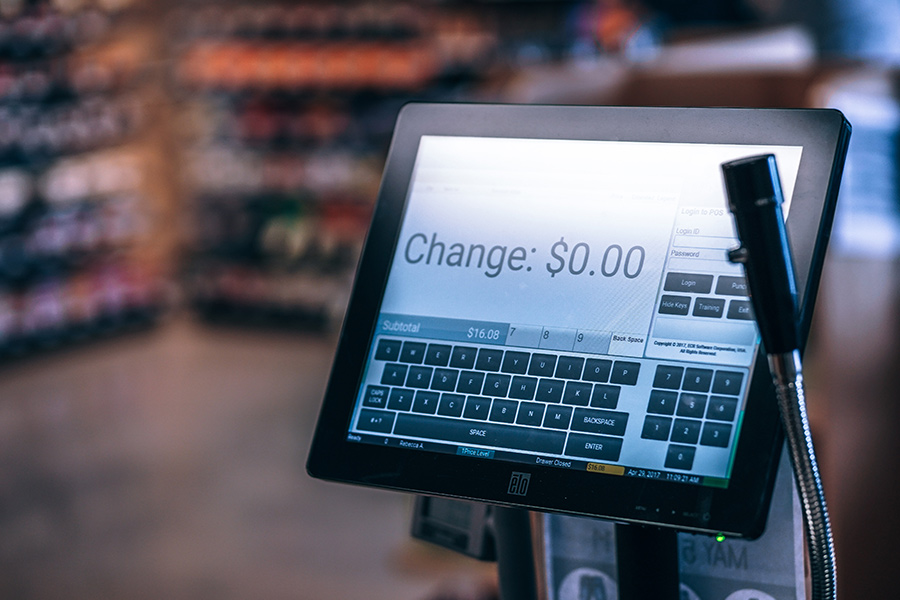Cash register, the legislation makes it mandatory for commercial activities. Here is the buying guide: how it works, how much it costs, what are the types and what is the best for your business.
The cash register is an indispensable tool for any business, an essential ally in managing the sales point in order to increase turnover.
Mandatory by law, the cash register is the tool that every commercial reality needs. The cash register is able to monitor the sales made, record the sums of money earned and release the receipt to the customer quickly and easily. Depending on the needs of the individual point of sale, the cash point can have different characteristics. From the basic model able to facilitate the processing of payments and to add up the profits, to the technologically advanced prototype with touch screen and POS payment terminal.
The current technological development has undoubtedly influenced the process of improving the performance of the cash register. Today, there are so-called “smart cash points” on the market, characterized by extremely rapid issuing of invoices and receipts and by new functions such as warehouse management and creation of customer cards. However, the primary functionality of cash registers remains unchanged over time: the revenue from the sum of revenue in a simple and quick way.
If in the past the cash point served exclusively as an optional “help” for the merchant, today the adoption of a fiscal cash register is an obligation imposed. In fact, decreed the obligation for every commercial activity – with the exception of some – to issue a receipt or a tax receipt for each transaction that took place. Each receipt issued must be kept by the merchant and exhibited in the event of any official control.
Cash Register: When is it mandatory?
International law provides that every business must have a cash register to issue a receipt or a receipt for each transaction performed. The fiscal cash register must be approved. It must also possess all the characteristics required by the relevant legislation. Once the register has been purchased, the operator will have to communicate it to the Inland Revenue in a short time by registered letter with return receipt. Every year the merchant is obliged to carry out a check on the functioning of the cash register. The audit will be carried out at the expense of the operator at entities authorized by the Revenue Agency.
When is the cash register mandatory? All companies with a turnover of up to $15,000 per year are required to have a fiscal cash register, of which at least $7,500 are calculated on cash payment. If a company decides not to have a fiscal cash register, a fine of up to $5,000 is required. In the event of tampering with the data or the instrument, the sanction could reach up to $25,000. There are many categories of traders excluded from the obligation to have a cash register. Keep reading profitable small farm ideas.
What should appear on the receipt issued by the recorder?
1) Commercial activity references
- Heading: company, name or company name;
- VAT number of the activity.
2) General information
- Issuing date;
- Issue time;
- Progressive issue number;
- Quantity and description of what was purchased;
- Tax logotype.
3) Accounting data
- Partial charges;
- Total spending amount;
- Subtotals;
- Any refunds;
- Any discounts.

Cash Register: Components and Features
Modern cash registers are composed of a software part and a hardware part.
The software is the back-end component of the registry, the one able to record and manage information regarding transactions. The software are operating systems and each cash register has a different one. There are on-site software, or systems installed on specific servers that require access licenses for each device, and cloud-based software, or online hosted systems that can be used by any device using login credentials.
The hardware components are the physical parts of the cash register, those necessary to carry out any practical operation. Let’s find out what are the fundamental ones of a cash register:
Interface: Monitor and Keyboard
The physical interface of the cash register is usually made up of a monitor and a keyboard. The monitor must be connected to a network device (router, modem, etc.) to access on-site or cloud-based software. The monitor can be fixed or mobile: many activities use a tablet as a cash register for convenience. The keyboard has basic features that can be customized. The most performed operations are: sum, multiplication, cancellation, cancellation, return and percentage discount.
Receipt Printer / Tax Receipts
All fiscal cash registers must be equipped with a special printer to issue receipts and receipts. The printer must comply with the dimensions prescribed by the law. Even the receipts issued must have specific validity characteristics.
Cash Drawer
The cash drawer is a fundamental part of the cash register. The drawer is divided into compartments of different sizes to hold every cash cut. At the end of each payment operation it is able to open automatically and, in the most modern recorders, it calculates the rest to be provided to the customer.
POS Payment Terminals and Card Readers
These devices are not present in all cash registers, but are now integrated into any business. They are, in fact, fundamental to accept payments by credit card and through NFC technologies. Classic POS terminals require the additional installation of a software or a line to work. The POS Mobile can instead work through a specific application and WiFi or 3G network.
Barcode Scanner
The scanner device is not present in all cash registers, but is now used by almost all commercial establishments as it is essential to reduce check-out times. The scanner is useful for automatically storing product prices without having to enter them manually.
Banknote Verifier
The verifier is able to check the authenticity of the banknotes in order to avoid fraud and fraud. It is positioned close to the cash register and guarantees security to the activities even in cash payments.
Cash Register Prices: How much does it cost?
The price of a cash register can vary greatly. It starts from the 200 dollars of traditional and simple models to reach the 2,000 dollars of modern and technological models. The most purchased recorder models for small and medium-sized stores are priced at less than 1,000 dollars.
The elements that contribute to the price change are mostly the hardware components. Buying a cash register with barcode scanner, banknote validator and POS terminal undoubtedly requires a higher expense. As for the software components, whether they are PC-based or cloud-based, they are supplied with a leasing contract. The contract provides for a monthly or annual fee based on the active software features (the price usually varies from 15 to 30 dollars per month).
The three types of Cash Register
There are many types of cash registers, we find out which are the three main models:
1) Classic Recorder
The classic cash register is the oldest version of the cash point and is exclusively equipped with a keyboard to carry out the main calculation operations. Over the years the classic recorder has evolved by integrating new features such as reading barcodes or digital payment methods through external tools. The classic recorders are equipped with a physical printer to print receipts. These tools are not recommended today, as they have limited and impractical functionalities.
2) PC-based Recorder
Cash registers on PCs are among the most widely used today. PC-based recorders are based on software that can integrate different functionalities by simply using a graphical interface. There are basic software and software that can guarantee complete management of the activity. These systems are mostly used to maintain data exclusively within their hardware. Accessibility is, in fact, limited to devices configured for the system. In other words, the system will work exclusively on an enabled terminal, it will not be possible to use it from other devices. PC-based systems require the intervention of computer technicians for installation. The PC-based recorder is particularly suitable for large retail businesses.
3) Cloud-based Recorder
The cloud-based cash register is the last frontier in the cash point, accessible simply by using an App. Unlike PC-based recorders, cloud systems are not associated with a specific device. They are, in fact, accessible from any device through specific credentials. In other words, the merchant can create multiple accesses for his employees: in this way every collaborator can use the cash register from his personal devices. Each access will have different functionalities: the operator will be able to choose a role and functions for each profile. Cloud-based cash registers are simple to use and do not require the intervention of installation technicians. It will be sufficient to download the appropriate application on your smartphone or tablet to have access to the management system. This type of recorder is particularly suitable for small businesses equipped with a portable Bluetooth card reader: receipts will be sent to the customer via email or SMS.
3 tips to choose the right cash register for your business
Choosing the cash point for your business is an indispensable activity. Here are 3 useful tips to buy the ideal register …
1) Make sure you need a receipt for your business
The first operation to be carried out in the choice of your own cash register is the assessment relating to the need for issuing a receipt. Some commercial activities, in fact, are not obliged to issue receipts and receipts. All the activities excluded from the legislation are listed. In the event that the activity does not require a fiscal cash register, it will be sufficient to have a simple and inexpensive cash point to improve check-out management. If the commercial operation is instead subjected to the obligation, it is always advised to purchase a smart and modern register. The most modern, i.e. cloud-based, registers allow simple access modes and reduced costs. The smart cash points also have features that can manage the entire check-out process in an optimal way.
2) Calculate the volume of your business
The choice of the cash register inevitably depends on the business volume of the business. Classic terminals without software are mostly recommended for activities with few customers and without the need to issue a receipt. If, on the other hand, you have a medium-to-large turnover, it is advisable to have a PC-based or cloud-based cash register, or a software capable of managing multiple activities. It is always useful to purchase a cash point equipped with a contact door and a POS terminal to accept transactions with cards and digital payments.
3) Consider the space available in your store
The physical space available for the cash register is another variable to consider during the selection and purchase process. If you want to avoid devoting a lot of space to the cash point, it is advisable to purchase a cloud-based recorder that allows mobility. In fact, the cloud-based system allows the installation of management software on smartphones and tablets.
You may also like to read: http://thefirewheel.com/





